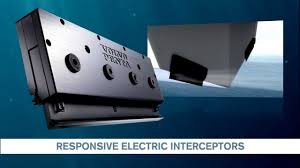McGillicuddy
Guru
- Joined
- Dec 4, 2015
- Messages
- 754
- Location
- USA
- Vessel Name
- Scot Free
- Vessel Make
- Cheoy Lee 53' Efficient
So, Scot Free was slow to get up to full speed during sea trials and ran a little bow up for a while, ploughing throught the water before it gathers enough momentum to plane. So I thought that perhap I could use a pair of trim tabs to lift the ass end and help things along.
So, I came across Interceptor Trim Tabs by Hydro-Tab and sold by Globaltec Solutions. (GlobalTec Solutions for those who want to look them up) I have never seen anything like them. They have a vertical carbon fiber blade that is pushed down broadwise into the waterflow at the stern. I would have thought that this would actually cause a speed brake effect but manufacturers claim that they actually do the opposite.

Has anybody here heard of them? Do they work? I would love to hear of any real world experience with them before I commit some boat$$ to them
So, I came across Interceptor Trim Tabs by Hydro-Tab and sold by Globaltec Solutions. (GlobalTec Solutions for those who want to look them up) I have never seen anything like them. They have a vertical carbon fiber blade that is pushed down broadwise into the waterflow at the stern. I would have thought that this would actually cause a speed brake effect but manufacturers claim that they actually do the opposite.

Has anybody here heard of them? Do they work? I would love to hear of any real world experience with them before I commit some boat$$ to them

 I have not had anyone take a picture from outside the boat while I'm underway.
I have not had anyone take a picture from outside the boat while I'm underway.

